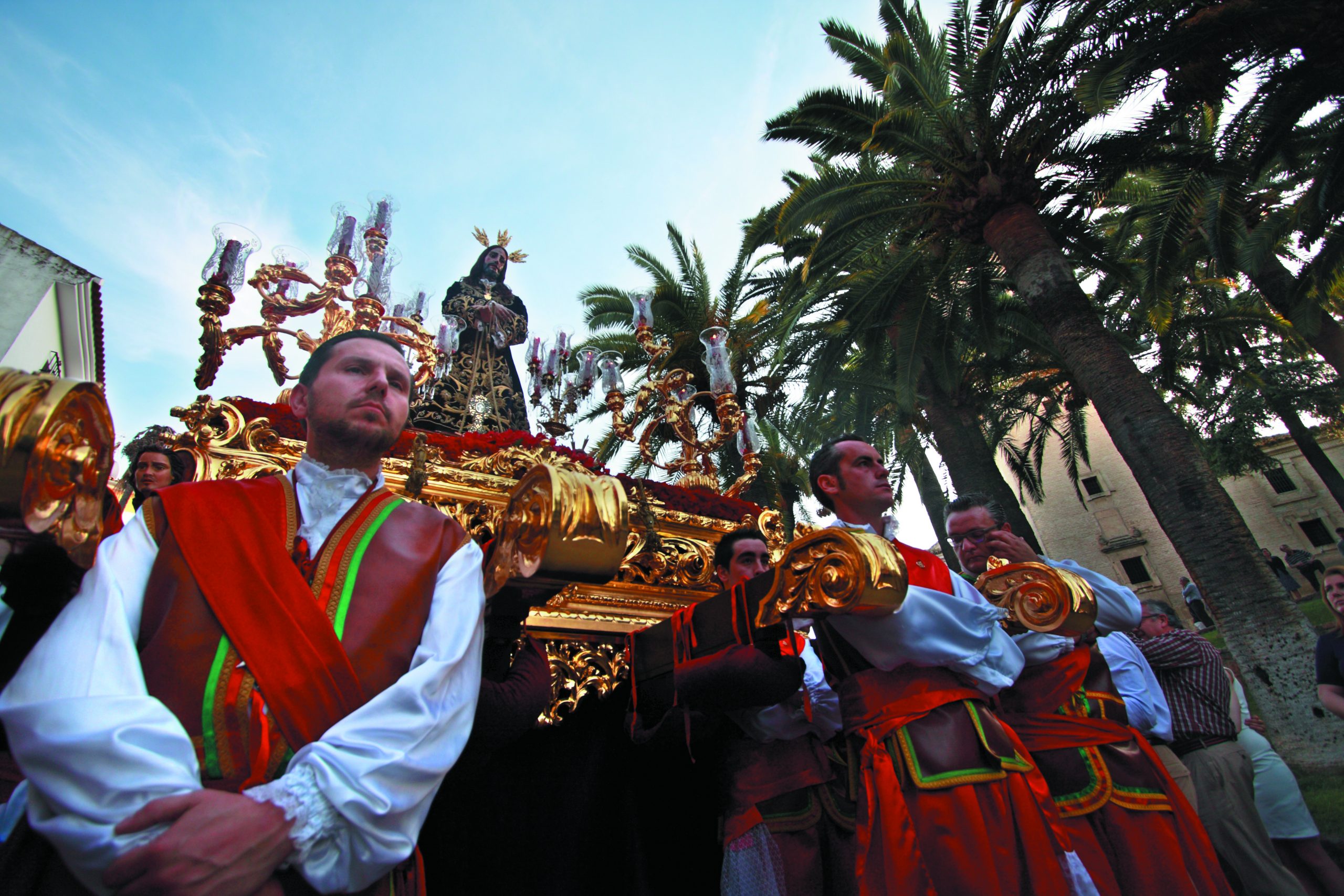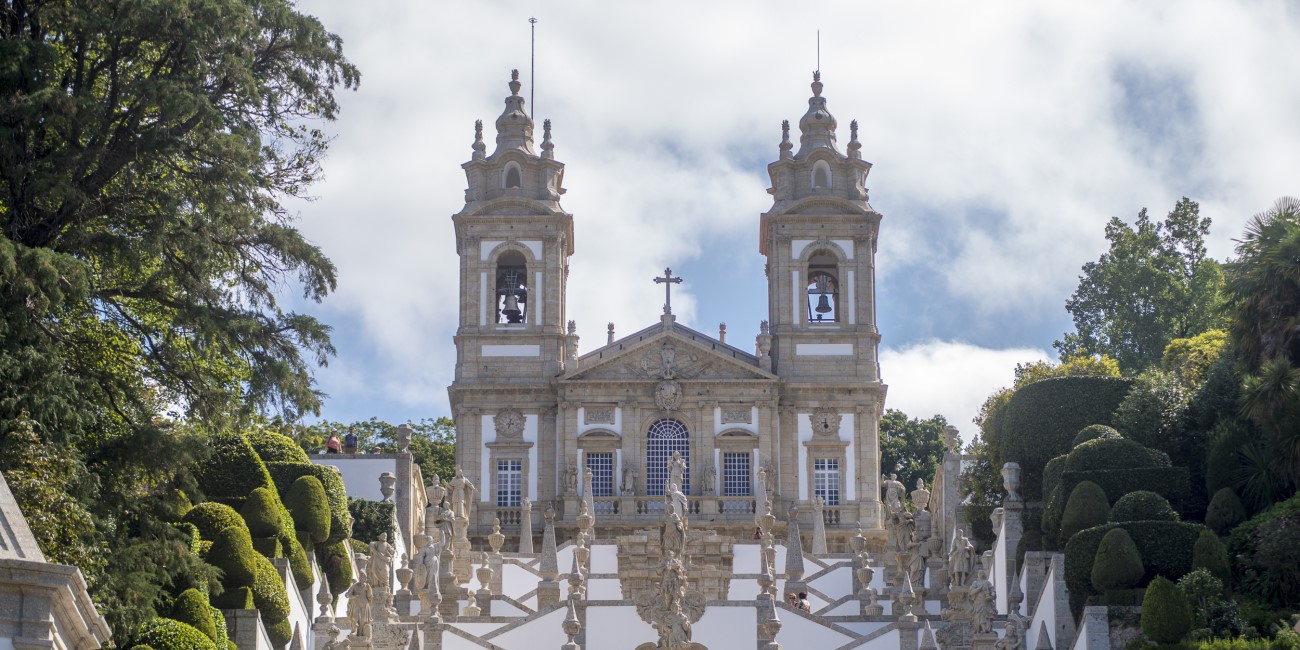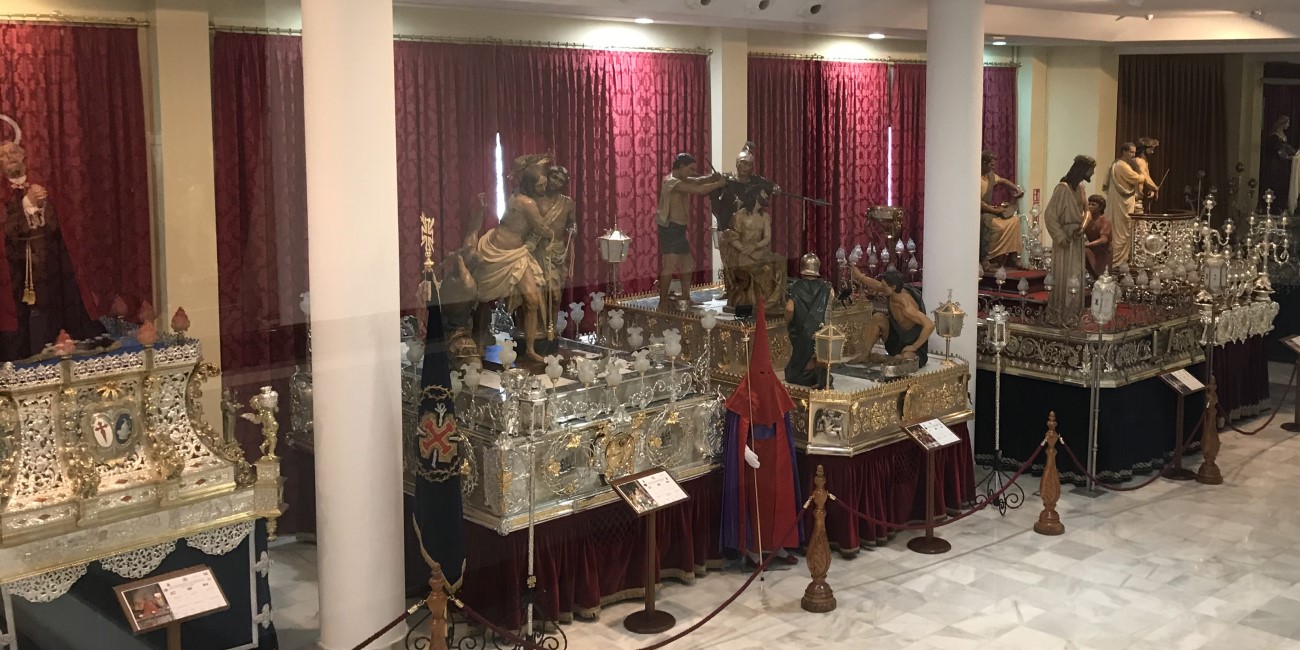
Viveiro (Lugo, Spain) offers us a very interesting Holy Week. Its numerous processions make this town one of the reference places among the Easter celebrations in Galicia. A Holy Week that, due to its great importance, has reached the declaration of a Festival of International Tourist Interest.
In the town there are eight brotherhoods that are responsible for the preservation of the traditions of these celebrations. They are the following: Venerable Orden Tercera Franciscana, the Brotherhood of Nuestra Señora del Rosario, the Brotherhood of Santísimo Cristo de la Piedad, the Brotherhood of Prendimiento, the Brotherhood of Siete Palabras, the Brotherhood of Santa Cruz, the Brotherhood of O Nazareno Dos de Fura and the Brotherhood of Misericordia of Viveiro.
The Venerable Orden Tercera Franciscana is related to the founding of the convent of San Francisco and dates back to the 13th century. This brotherhood housed part of the patrimony of other brotherhoods that disappeared from the town in the seventeenth century, such as that of Vera Cruz. After being based in the aforementioned convent, in 1741, the brotherhood would go on to build its own chapel. After a period of decline of the Brotherhood at the beginning of the 19th century, it would resurface in 1899, having remained in full force until today.
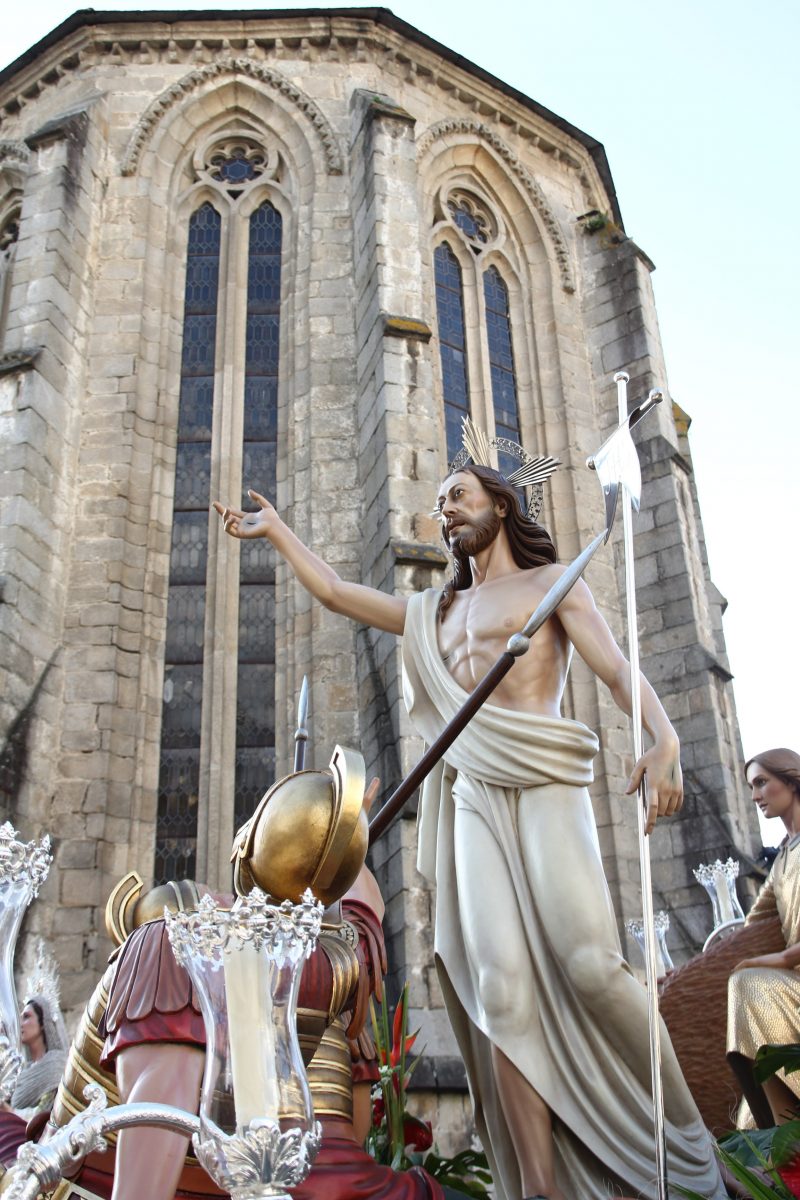 The Brotherhood of Nuestra Señora del Rosario has its origin, as in the previous case, linked to the foundation of a convent. In this case the Dominican convent, an order that was established in the town in the 13th century. At present the brotherhood has its headquarters in the church of Santa María del Campo. It is the brotherhood that celebrates, among other rituals of Holy Week, the Desenclavo, one of the most traditional moments of Holy Week in the town.
The Brotherhood of Nuestra Señora del Rosario has its origin, as in the previous case, linked to the foundation of a convent. In this case the Dominican convent, an order that was established in the town in the 13th century. At present the brotherhood has its headquarters in the church of Santa María del Campo. It is the brotherhood that celebrates, among other rituals of Holy Week, the Desenclavo, one of the most traditional moments of Holy Week in the town.
The Brotherhood of Prendimiento was created as a section of the Brotherhood of Santísimo Cristo de la Piedad, becoming independent from it in 1951. The main image of the brotherhood is “El beso de Judas”, a work by José Rivas that would parade for the first time at 1947. This is not the only procession carried out by the brotherhood that, over the years, has been incorporating new images in the different processions: Ecce Homo, Virgen de la Parroquia de Santiago, Negaciones de San Pedro and Nuestro Padre Jesús Nazareno.
The Brotherhood of the Siete Palabras was born in 1951, it is responsible for the passage of Calvary, a sculptural group of great interest that participates in the procession of La Pasión. The brotherhood also participates in the Via Lucis procession with the image of Nuestra Señora del Camino de la Luz.
The Brotherhood of the Santa Cruz was born in 1953 and, as in the previous case, from the initiation of the Brotherhood of the Santísimo Cristo de la Piedad. It is a female brotherhood that arises at the will of a group of women to be able to participate in the rituals of Holy Week in Viveiro. For many years a processionary with a throne with a naked Cross. Since 2010, the Virgen de la Esperanza step has been incorporated into the processions.
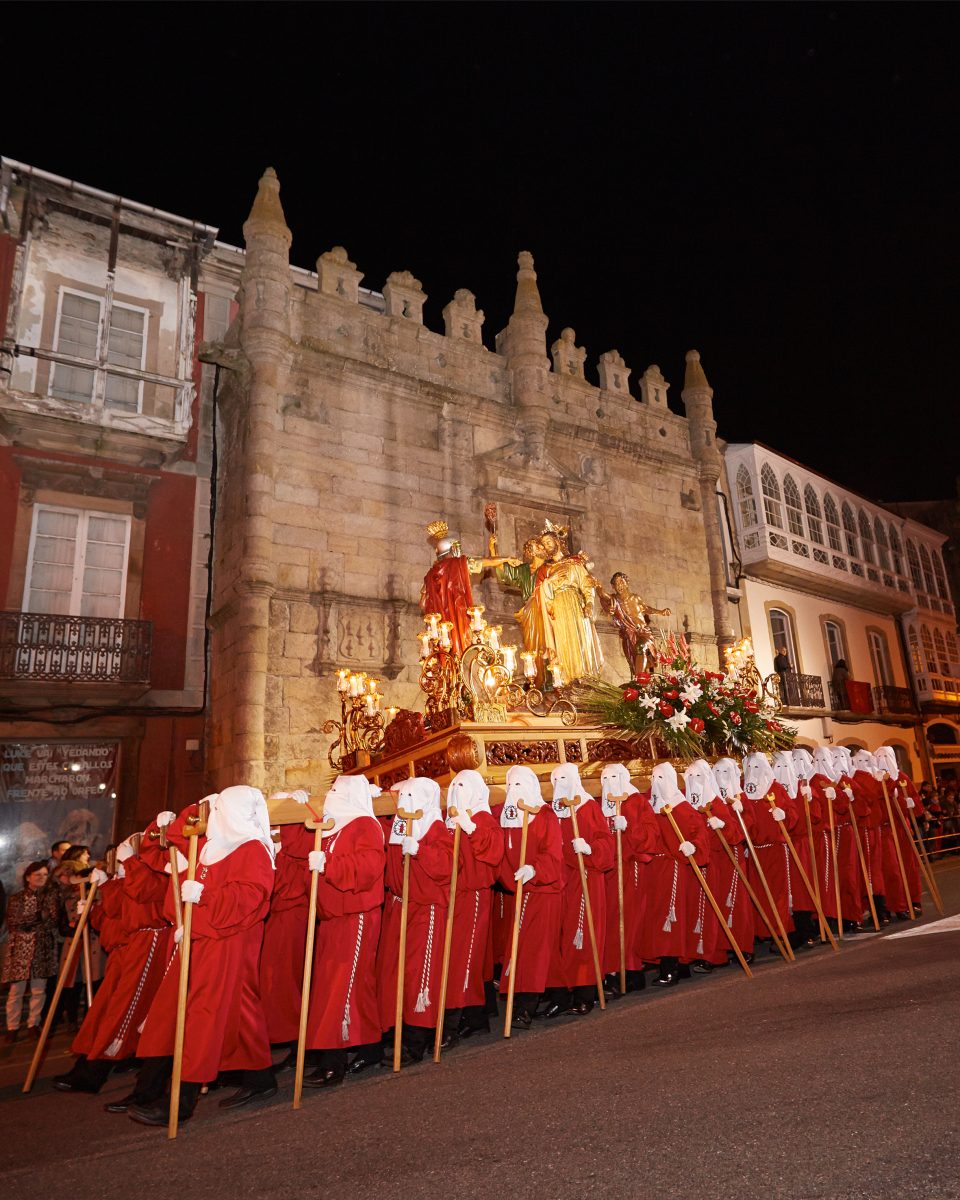 The brotherhood O Nazareno Dos de Fuga was founded in 1995, originally being tutored by the Venerable Orden Tercera Franciscana; in 2003 the brotherhood became completely independent from the previous one. Procession on Holy Thursday with the carving of the Sagrado Corazón of the Church of Santiago. The brotherhood also takes in procession the throne of the Flagelación that is carried by residents of the town who reside outside of it. The Confraternity of Misericordia procession with the title image and the Ecce Homo de la Misericordia.
The brotherhood O Nazareno Dos de Fuga was founded in 1995, originally being tutored by the Venerable Orden Tercera Franciscana; in 2003 the brotherhood became completely independent from the previous one. Procession on Holy Thursday with the carving of the Sagrado Corazón of the Church of Santiago. The brotherhood also takes in procession the throne of the Flagelación that is carried by residents of the town who reside outside of it. The Confraternity of Misericordia procession with the title image and the Ecce Homo de la Misericordia.
In addition to the solemnity of the processions and the different acts that take place during Holy Week, we must draw attention to the social participation of the inhabitants of the town and its dynamism maintained over time. The brotherhoods have a high number of members that keep the Easter tradition alive with a high degree of authenticity. The work for the conservation, improvement and incorporation of steps in constant over time, which denotes a notable involvement of a large part of the population in the development and conservation of these traditions.
In addition to the important catalog of processional images, Viveiro brings together an important set of religious buildings of great historical and artistic value. Among these we can highlight the Church of Santa María, the Convent of San Francisco, the Convent of the Concepcionistas, the Chapel of Misericordia or the Church of San Pedro. These are not the only attractions of the city to which we have to add other buildings and civil monuments, splendid landscapes and natural environments and a wide range of walks.
Holy Week is an excellent time to visit the town and discover its processions, as is any time of the year to discover its very interesting heritage.


